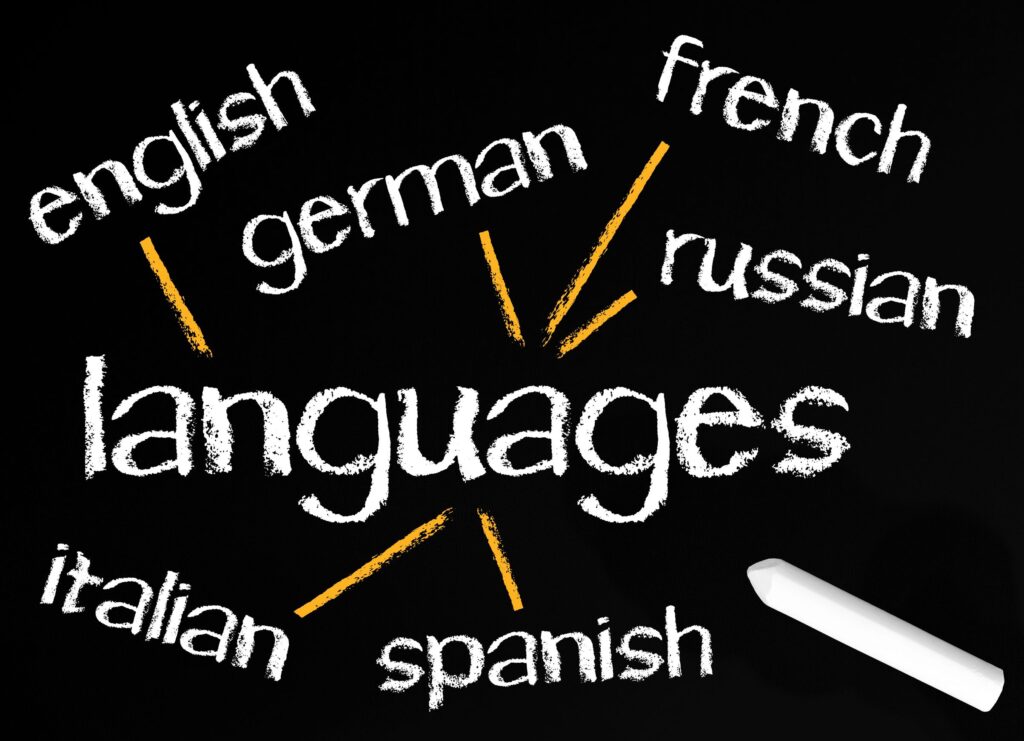Spanish is one of the most widely used languages globally, with over 580 million speakers worldwide. Thus, the language has evolved and changed through the years and across the countries that use it.
There are more differences between European Spanish and Latin American Spanish than you may think. Generally, Spanish speakers can all understand each other. However, there are still some differences that are worth learning more about. We’ve collected everything you probably didn’t know regarding the differences between the two languages, from vocabulary to pronunciation and beyond.
In Latin America, the Spanish language is referred to as español or Spanish due to the language being brought by Spanish colonizers. In Spain, it is called castellano or Castilian as it relates to the Castle province in Spain. The Castle province is where the language is believed to have originated.
The main reason people in Spain don’t refer to the language as español is that there are various languages spoken in Spain that are also considered Spanish languages.
Why are there different kinds of Spanish?
The short answer to this is that language evolves. This is similar to how American English speakers say “fall” and British English speakers say “autumn.”
A linguist names Marckwardt coined the process as “colonial lag,” referring to how a language in a colony does not evolve the same way as it does in the country of origin.
Now that we’ve brushed up on a bit of Spanish language history, it’s time to dive into the most notable differences between European Spanish and Latin American Spanish.
Vocabulary and Pronunciation
The Spanish language stays relatively the same, albeit with some noticeable differences. However, these language nuances don’t really pose a problem when it comes to communication.
Differences in vocabulary and pronunciation are the most prominent when it comes to these two languages. Let’s first get into the differences in vocabulary.
Vocabulary
The majority of Spanish words are universal, but some aren’t. Here are some examples that you can remember:
Coger
In Spain, the verb coger, which means “to catch,” is also frequently used to indicate grabbing or fetching. It has a broader meaning in Spain. Hence, an example of its use is coger al toro por los cuernos. This literally means “to take the bull by the horns.”
On the other hand, in Latin America, coger is used as slang that refers to love-making. It’s best to know these terms before using them willy-nilly!
Pen
Another example is the words used for pen. It varies among some Spaning speaking countries. In Spain, a pen is boligrafo, but it is lápiz pasta in Chile. It is also called a lapicera in Argentina.
Mobile Phone / Cell Phone
The word “mobile phone” in Spanish also varies. It is móvil in Spain and celular in Latin America.
These are just a few of the minor discrepancies in terms of vocabulary. However, it’s essential to keep in mind that these will not matter in day-to-day or casual conversation. If you’re only starting to learn the language, then you shouldn’t worry about these nuances right away.
We do have a word of caution: do not use words that you are unfamiliar with. Some vocabulary differences may lead you to an uncomfortable or embarrassing situation if you use the wrong word with the wrong context. An example of which is coger, as mentioned above.
Pronunciation
There is one significant difference when it comes to pronunciation.
In Spain, people pronounce “z” and “c” similar to how “th” in “think” is pronounced in English. On the other hand, Latin American Spanish speakers pronounce it as “s.”
For example, the word “gracias” is pronounced more like “gra(th)ias” in Spain. Whereas Latin American Spanish will sound like “gra(s)ias.”
The word “cinco” will be pronounced by Spaniards as “(th)inco,” while Latin Americans will say “(s)inco.”
Another noteworthy difference is the pronunciation of “ll” and “y.” Argentinians pronounce “ll” like the “sh” sound in English. So, the word “lloviendo,” which means raining, sounds more like “sho-vien-do” in Argentina.
Compared to Spain, Latin American Spanish speakers often drop the letter “s” at the end of words. For example, in Puerto Rico, Chile, Cuba, Venezuela, and Dominican Republic, “vamos” is pronounced as “vamo.”
The letter “d” is also often dropped by Latin American Spanish speakers in the last syllable of a word. Thus, “coco rallado” sounds more like “coco rallao” in Latin America.
Fun Facts About the Spanish Language
- The United States has over 40 million native Spanish speakers, and it is projected to be the largest Spanish-speaking country in the world by 2050.
There are actually more Spanish speakers in the United States as compared to speakers of Hawaiian, Chinese, Italian, French, and Native American languages combined.
- Spanish is the British Council’s #1 “language for the future.
The British Council report for languages for the future identifies the priority languages for the UK’s future prosperity, security, and influence in the world. Spanish takes first place on that list. Learning or speaking the language may provide you with more opportunities and open doors in the future.
- Spanish is not the only language in Spain.
Locally known as Castillan, Spanish is not the only language used in Spain. Regional languages are of particular importance, such as Catalan, Valencian, Basque, and Galician.
- Spain’s Don Quixote is considered the first modern novel.
The classic tale in Don Quixote of an aging man who decides to become a questing knight is widely regarded as the first modern novel. It is a cherished piece of literature appreciated worldwide.
Despite the differences between European Spanish and Latin American Spanish, you won’t encounter any language barriers when communicating with the two. They essentially have the same meanings and use, albeit with some minor differences.
If you’re learning the language, traveling, or a native Spanish speaker, these differences are worth remembering to avoid embarrassing situations.
Did you know these distinctions between European Spanish and Latin American Spanish already? Let us know if you can share more in the comments!
Call eTS whenever you need Spanish translation services
Whenever you need professional help to translate your content into Spanish, look no further. We are here to assist you. Please send us your request via email at [email protected] or call us at (800) 882-6058. We have native Spanish speakers and subject matter experts to assist you with your translation project wherever you are. We guarantee accurate and high-quality Spanish translations at competitive prices. Get in touch with eTranslation Services now.



